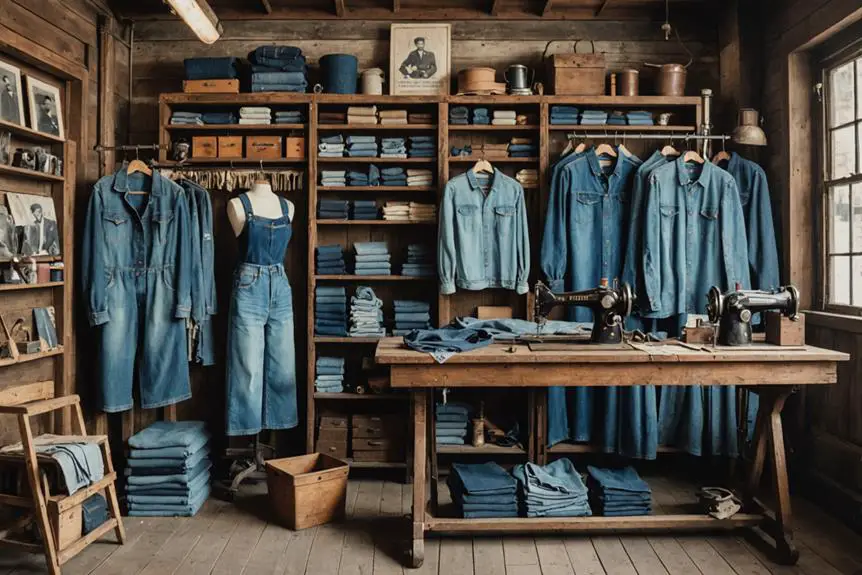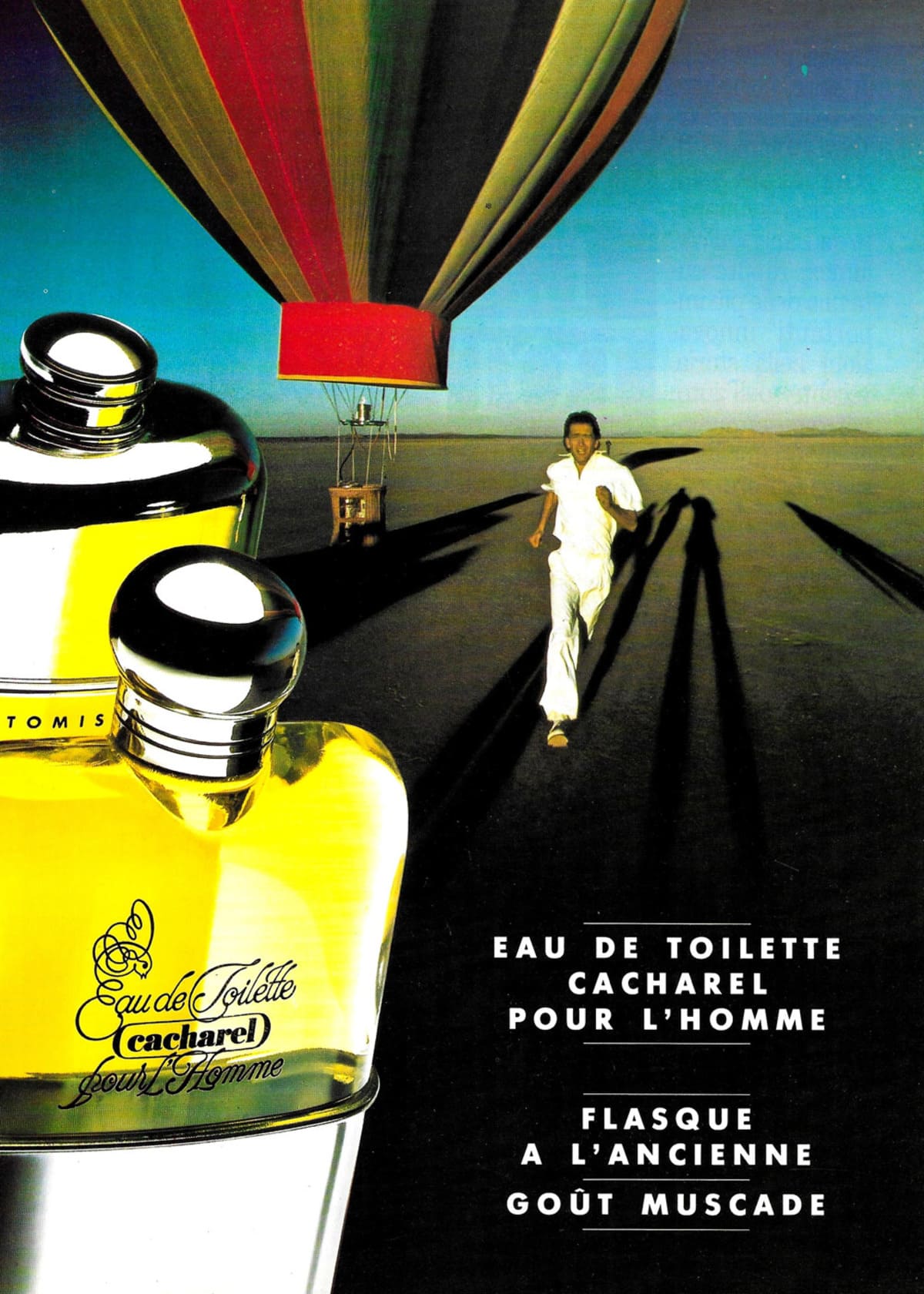When you think about the oldest jeans brands, Levi Strauss & Co., Lee, and Carhartt lead the pack. Founded in 1853, Levi's revolutionized denim with their iconic 501 model and innovative riveted pants. Lee, established in 1889, introduced groundbreaking features like the zipper fly, while Carhartt, also founded that year, focused on creating durable workwear for tough environments. These brands not only laid the groundwork for jeans as practical garments but also transformed them into cultural icons. Their enduring legacy and contributions to denim history are fascinating, and there's so much more to uncover about their journeys!
Overview of Jeans Brands
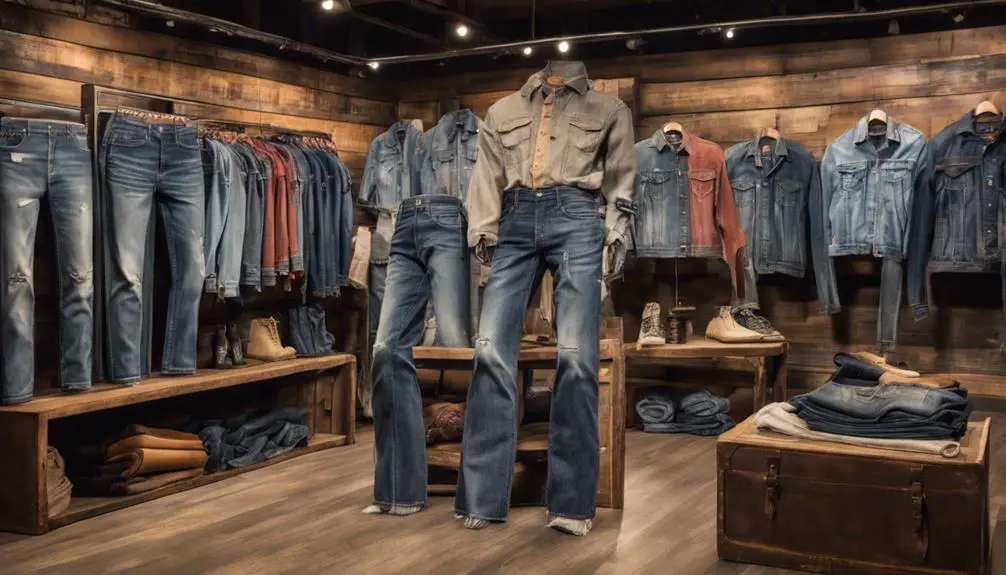
Jeans brands have consistently evolved over the years, each bringing its unique flair to the denim market. From their origins in the mid-19th century, jeans have transformed into a staple of modern clothing, with various brands emerging to shape their history. One of the most iconic names is Levi Strauss & Co., founded in 1853, credited with inventing the first blue jeans. Their patent for riveted pants in 1873 paved the way for the legendary 501 model, which remains a classic even today.
Then there's Lee, established in 1889, known for its durable work attire and innovative features like the zipper fly and tailored fits. Lee's rich history includes the introduction of the vintage Lee logo variations and the first-ever pair of overalls in 1911, proving that functionality can blend seamlessly with style. Wrangler followed in 1947, focusing on work clothing and cowboy markets, boasting the signature "W" stitching on back pockets and a long-standing sponsorship of the Pro Rodeo Cowboys Association.
Carhartt, also founded in 1889, emphasizes rugged workwear, providing clothing that outlasts tough conditions, a demonstration of its commitment during both World Wars. Meanwhile, Diesel, established in 1978, revolutionized the denim landscape by pioneering the luxury market, showcasing creativity and edgy fashion.
These brands' rich histories reflect not just the evolution of jeans but also the cultural shifts that shaped clothing preferences, making denim an enduring symbol of style and resilience in your wardrobe.
Historical Background of Levi Strauss
In 1853, Levi Strauss founded his company in San Francisco, California, initially selling dry goods to miners during the Gold Rush. As the demand for durable clothing grew, Strauss recognized an opportunity to meet the needs of hard-working individuals. Collaborating with tailor Jacob Davis, they invented the riveted pants, which offered unmatched durability for laborers. This innovative design featured reinforced pockets that could withstand heavy use, making it a game-changer in workwear. The enduring popularity of durable clothing can be seen across various fashion brands, including vintage Nike clothing, which reflects a similar commitment to quality and practicality.
On May 20, 1873, Strauss and Davis secured a U.S. patent for their ingenious pocket-opening fastening, marking the birth of the iconic blue jeans. This patent not only revolutionized denim but also laid the foundation for a timeless fashion staple. By 1890, the launch of the 501 model established Levi's as a leader in the denim market, celebrated for its straight leg cut and button fly design. These features were not just practical; they became synonymous with style and comfort.
Over the past 150 years, Levi Strauss & Co. has continued to evolve and innovate while staying true to its roots. The brand's commitment to sustainability and responsible production practices guarantees that it remains relevant in today's fashion landscape. From its humble beginnings to its status as a global icon, Levi Strauss has truly become a symbol of American culture and craftsmanship. So, the next time you slip into a pair of blue jeans, remember the rich history that has shaped this beloved garment.
Innovations by Lee and Wrangler
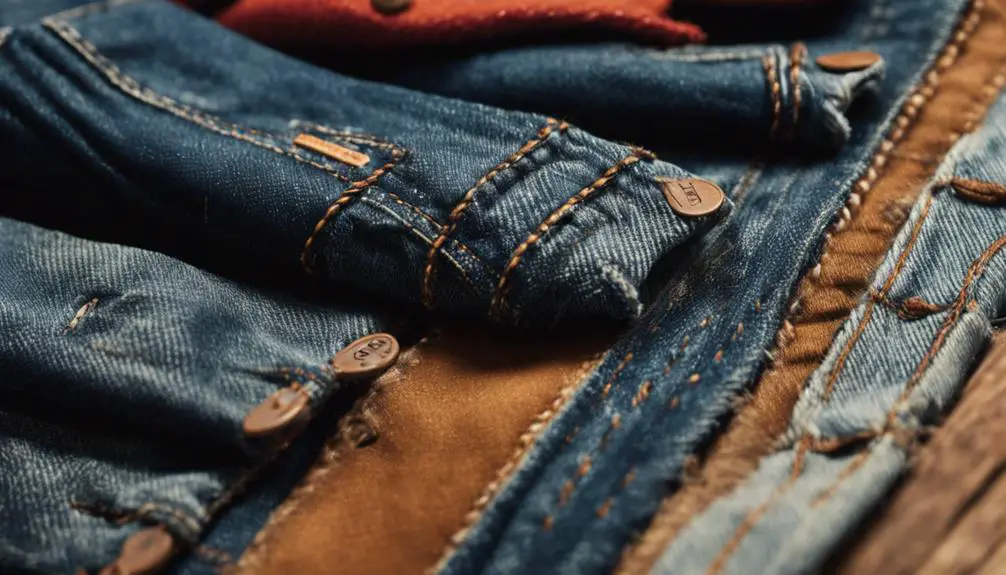
Innovation has always been at the heart of Lee and Wrangler, two brands that have greatly shaped the denim industry. Lee made a notable mark in 1911 by introducing the first-ever pair of overalls, setting a standard for durable work attire that many jeans brands still aspire to today. Their pioneering of the zipper fly in jeans was a game-changer, enhancing functionality and comfort for wearers everywhere. Additionally, Lee's commitment to understanding laborers' needs is evident in their early product developments, such as the introduction of Jelt Denim in the 1920s, which greatly improved durability and comfort.
Wrangler, founded in 1947, took innovation to the next level with the development of the iconic "W" stitching on back pockets, which has become a signature element of their denim products. This distinctive feature not only adds a stylish flair but also reinforces the brand's connection to Western culture. Wrangler has further solidified its commitment to workwear by sponsoring the Pro Rodeo Cowboys Association since 1974, showcasing their dedication to creating mens work pants that are as tough as the cowboys who wear them.
Both Lee and Wrangler have evolved with the times, expanding their product lines to include tailored fits and casual wear, ensuring they meet the diverse preferences of modern consumers while retaining their heritage in durable work clothing. Their commitment to improvement in fastening pocket-openings has made accessing essentials easier, reflecting their understanding of practicality in everyday wear. It's clear that with each innovation, Lee and Wrangler continue to lead the charge in the ever-evolving denim landscape, making them enduring staples in your wardrobe.
Carhartt's Workwear Legacy
Carhartt's legacy in workwear is a reflection of the brand's unwavering commitment to durability and functionality, much like Lee and Wrangler's dedication to crafting reliable denim. Established in 1889 by Hamilton Carhartt in Michigan, this clothing brand focused on creating rugged, durable workwear tailored for laborers and outdoor workers. Its prominence soared during both World Wars, as Carhartt provided coveralls and work attire that emphasized practicality and resilience. Vintage Carhartt items, often sought after by collectors, hold significant historical value due to their logo evolution and historical context, showcasing the brand's identity over the decades.
You can trust Carhartt because of its:
- Quality materials: Using duck and denim known for their strength, Carhartt guarantees every piece withstands tough conditions.
- Proven history: For over a century, farmers, construction workers, and outdoor enthusiasts have relied on Carhartt for dependable clothing.
- Versatile offerings: Today, the brand has expanded its lineup to include casual wear while maintaining its reputation for high-performance workwear.
Carhartt's commitment to quality has made it a staple in the wardrobes of those who tackle demanding jobs. With each piece designed to endure the rigors of daily use, you can feel confident knowing your clothing can handle whatever challenges come your way. Whether you're on a construction site or enjoying the great outdoors, Carhartt's durable workwear remains a trusted choice. This brand embodies the essence of functional clothing, guaranteeing that you not only look good but also feel equipped to take on any job, making it a true icon in the world of workwear.
Emergence of Fashion-Forward Brands
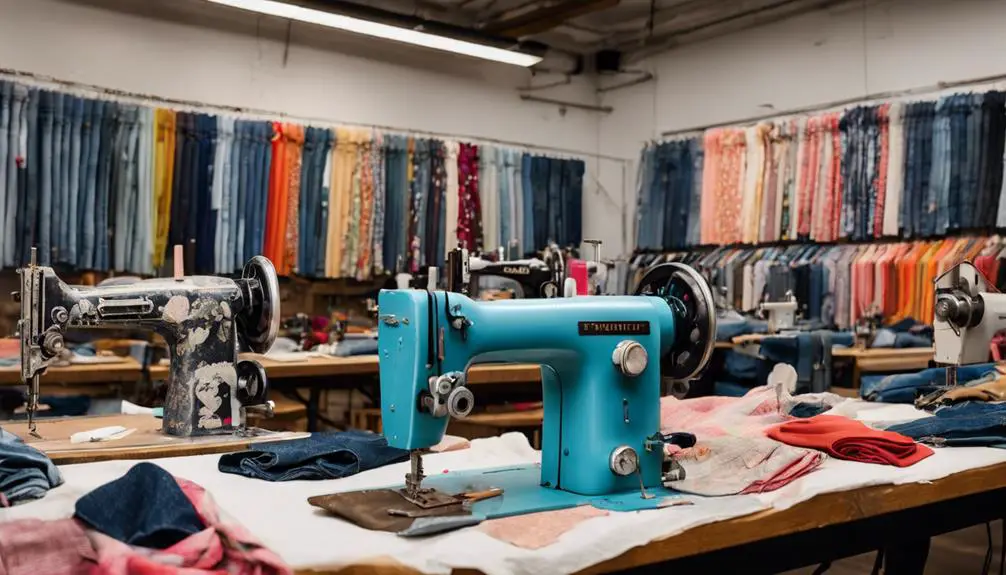
The late 20th century saw a significant shift in the denim landscape as fashion-forward brands stepped into the spotlight, transforming how people viewed jeans. No longer just a workwear staple, jeans became a canvas for creativity and style. Brands that make innovative and trendy denim flourished, capturing the hearts of consumers with their unique approaches to fashion.
One of the pioneers in this movement was Diesel, founded in 1978, which redefined luxury denim with edgy designs. The early 1980s saw the rise of Guess, established in 1981, known for its youthful and trendy styles. Then came Tommy Hilfiger in 1985, who rebranded his jeans line to Tommy Jeans in 2018, connecting with rebellious youth culture. Calvin Klein, with its minimalist aesthetic, achieved impressive sales, while G-Star RAW, founded in 1989, focused on raw denim and sustainability.
Here's a quick look at some key players in fashion-forward denim:
| Brand | Year Founded | Notable Style |
|---|---|---|
| Diesel | 1978 | Luxury and edgy designs |
| Guess | 1981 | Trendy and youthful |
| Tommy Hilfiger | 1985 | American cool, rebellious culture |
| Calvin Klein | 1968 | Minimalist and sensuous |
| G-Star RAW | 1989 | Raw denim and sustainable practices |
These brands are not just making jeans; they're setting trends and influencing how you choose your next pair of jeans. The emergence of fashion-forward brands has truly revolutionized the denim industry, making every pair of jeans a statement piece.
Cultural Impact of Denim
Denim's journey from workwear to a global fashion icon is nothing short of fascinating. You can see how it became a canvas for rebellion and individuality, influencing countless subcultures like punk and grunge while also challenging societal norms. As you explore denim's cultural impact, you'll discover its role in shaping personal expression and its undeniable presence in wardrobes around the world, proving it's so much more than just fabric.
Denim in Subcultures
How did denim transform from a durable workwear fabric into a powerful symbol of rebellion and identity? The evolution of denim is a fascinating journey, especially as it found its place in various youth subcultures. In the 1950s and 1960s, denim jeans became synonymous with the rebellious spirit of icons like James Dean in "Rebel Without a Cause." This shift was so profound that Western-made jeans challenged Soviet ideology during the 1957 Festival of Youth, making them a representation of freedom.
Denim's cultural impact didn't stop there; it continued to evolve through the punk and grunge movements of the 1980s and 1990s. These subcultures embraced distressed denim, allowing individuals to express their unique styles.
- Jeans became a canvas for personal expression.
- Black markets for Western jeans in the Soviet Union showcased resistance to state fashion.
- Styles like skinny jeans and high-waisted cuts emerged in the 2000s, influenced by streetwear.
As you can see, denim isn't just clothing; it's a powerful medium of identity and expression that still resonates across diverse subcultures today.
Rebellion and Individuality
Jeans have long been more than just a practical garment; they've become powerful symbols of rebellion and individuality. Originally designed for miners in the 19th century, they transformed dramatically, especially during the 1950s. When you think of that iconic pair of blue jeans, you might picture James Dean in "Rebel Without a Cause," epitomizing teenage defiance and nonconformity. This portrayal solidified jeans as a staple in youth counterculture.
By the 1960s, mens and womens jeans emerged as essential fashion pieces across various subcultures, reflecting societal changes and promoting personal expression. As jeans made their way into the Soviet Union during the 1957 World Festival of Youth and Students, they became symbols of Western influence and resistance against Soviet ideology, showcasing how a simple piece of clothing could carry so much weight.
Fast forward to the 1990s, and distressed denim hit the mainstream, driven by punk and grunge movements. These styles showcased not just fashion, but also individuality, allowing wearers to express their personal stories through their jeans. Embracing this garment means embracing a legacy of rebellion and the celebration of who you truly are.
Global Fashion Influence
With their roots in rebellion and self-expression, jeans have transcended their practical origins to become a global fashion phenomenon. Originally designed for miners and laborers, jeans gained immense popularity in the 1950s, especially after being embraced by film icons like James Dean. This shift marked the beginning of jeans as a symbol of youth culture, sparking a worldwide love affair.
Today, denim's cultural impact is undeniable, influencing various subcultures and movements across the globe. Whether you're in San Francisco or Tokyo, jeans have become synonymous with freedom and nonconformity. Here are some key points about denim's global influence:
- The introduction of Western-made jeans in the Soviet Union in 1957 challenged local ideologies.
- The intentional distressing trend in the 1980s emphasized individuality in fashion.
- Sales of jeans are projected to reach approximately $18.4 billion in 2023, highlighting their economic significance.
From the oldest pair found in the United States to contemporary styles, jeans continue to evolve, reflecting societal changes while remaining a staple in wardrobes worldwide. Their journey symbolizes not just fashion, but a powerful cultural narrative.
Frequently Asked Questions
Which Jeans Brand Is the Oldest?
When considering denim evolution, Levi Strauss stands out as the oldest jeans brand. Its vintage styles have influenced countless fashion trends, shaping how you view denim and elevating its status in the world of fashion.
Who Was the First Jean Brand?
Ever wondered who kickstarted denim history? Levi Strauss & Co. was the first jean brand, revolutionizing jean innovations with unique fabric types and vintage styles, paving the way for today's iconic denim fashion.
What Are the Oldest Pairs of Jeans?
When you explore vintage denim, you'll appreciate its historical significance. The evolution trends reflect cultural impact, showcasing iconic designs like the 9Rivet and those from shipwrecks, each telling a unique story of fashion history.
What Were the Famous Jeans Brands in the 1970S?
In the 1970s, you'd see brands like Levi's, Lee, and Wrangler dominating denim trends. Their bell bottom styles, iconic advertisements, and celebrity endorsements shaped fashion, making jeans a must-have for every wardrobe.
